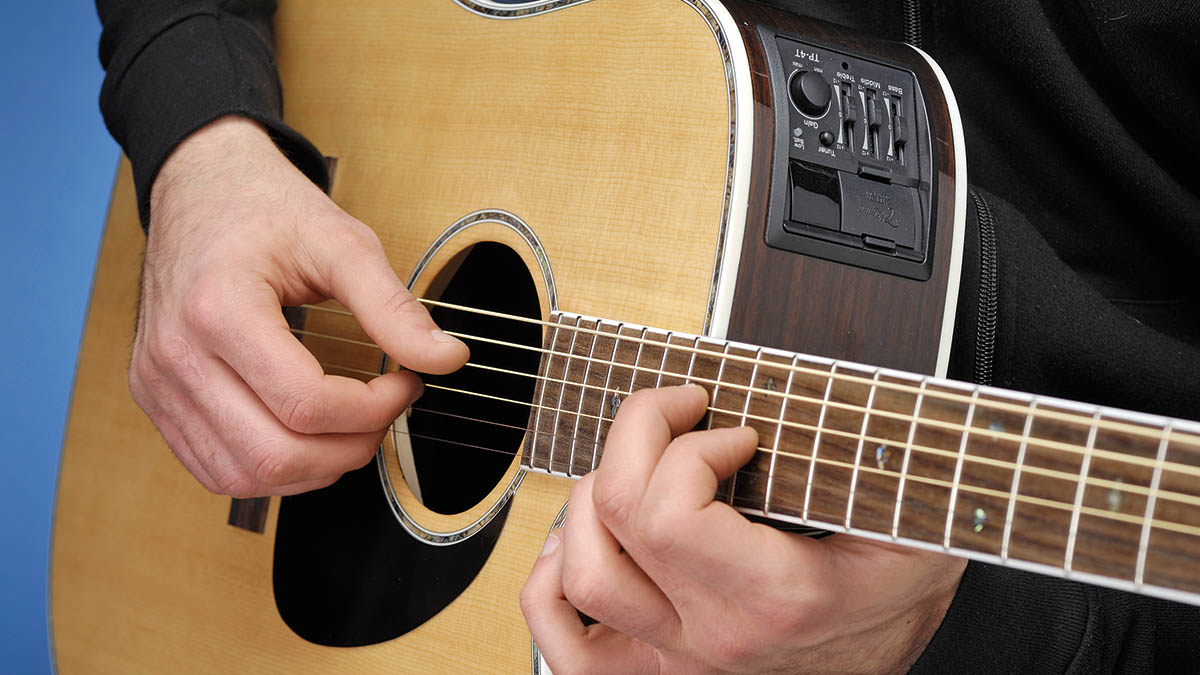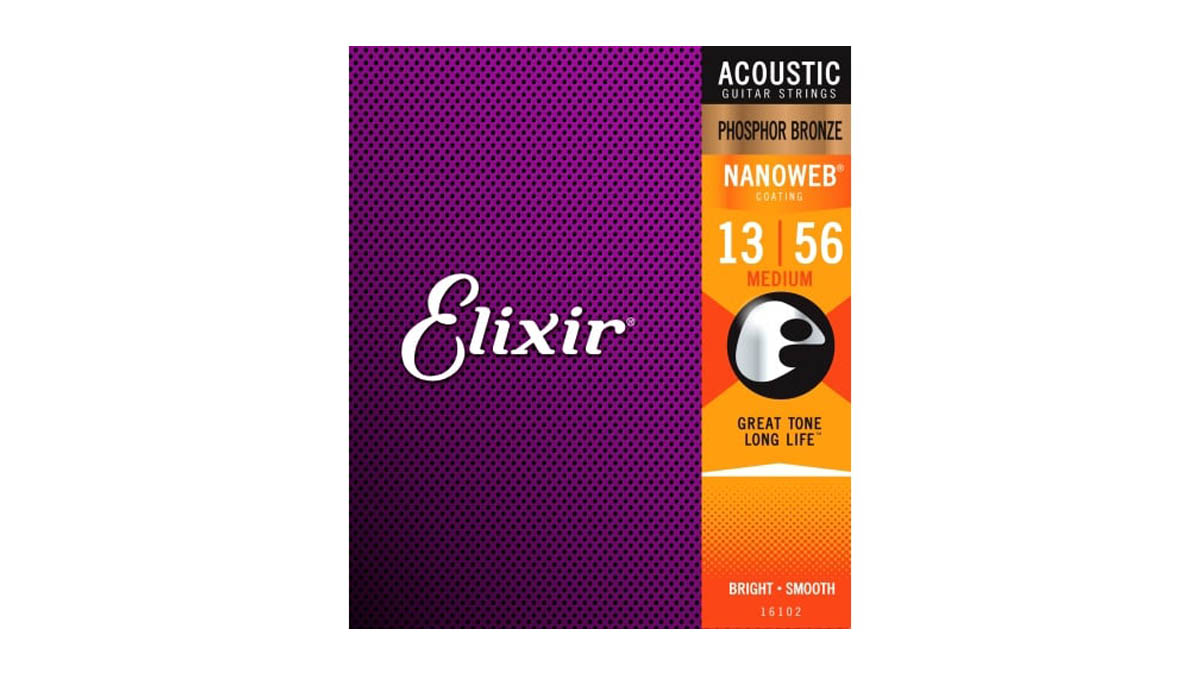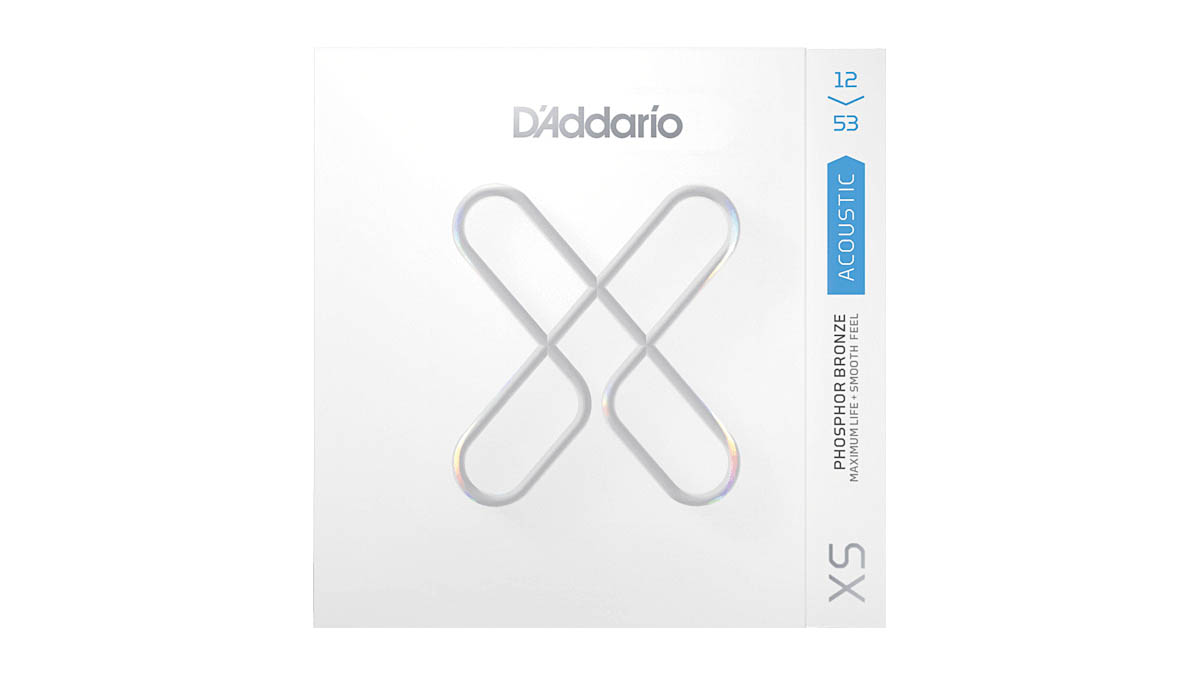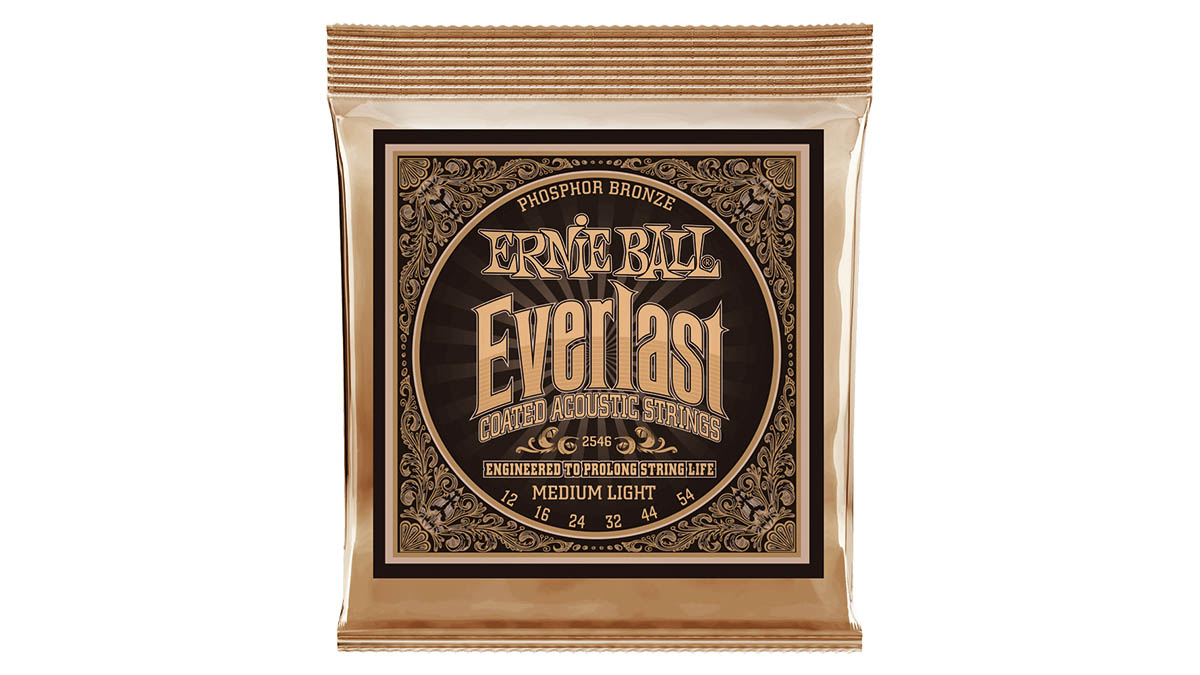How to reduce guitar string noise
Banish the rattle and squeak with a little help from acoustic guitar master Martin Simpson

Over the past few years I’ve spent more and more time playing fingerstyle acoustic. Finally, I’ve reached the stage where I’ve written and rehearsed enough material to record an EP of instrumental folk – with John Renbourn as my main influence and other fingerstyle masters, such as Pierre Bensusan and Sheffield’s Martin Simpson, as ongoing sources of inspiration.
So I have the studio booked, the material rehearsed and the guitars at the ready. But there’s still one problem… In the course of rehearsing the pieces I want to record, I’ve discovered some of the songs involve sliding licks that, eight times out of 10, cause an intrusive squeak that’s tolerable in the room but really jarring on a recording.
Engineer Martin Holmes and I chew the fat about the best way to cut down the squeaks, but, after much theorising on the subject, we conclude it might be an idea to ask someone who has incredible acoustic tone to weigh in with some specialist advice. With that in mind, I drop the ever-obliging Martin Simpson a line, who replies that he’s “more than happy to offer his two penn’orth”.
As I call, I wonder a little nervously if his answer will suggest a complete overhaul of my songs or fingering technique. But, as it turns out when we start chatting, Martin says there are two fairly straightforward things anyone can do to reduce intrusive handling noise on acoustic recordings.
“When I was a kid, I would change my strings almost as often as I do now,” Martin says. “I bought the cheapest strings – I bought Red Dragons – but I would change them as often as I could, because if you don’t, they go out of tune or they don’t even play in tune, you know?
“And so one of the first things I would say about recording guitar is you want your guitar to sound as wonderful as it can possibly sound. But then you’ve got the question of, ‘Well, but do you like the sound of absolutely new strings?’ Which I do. I really like the sound of new strings.
With an acoustic guitar, there’s no flattering overdrive to step on, no pickup selector to flick. You have to do it all with your fingers…
“There’s a tendency for new strings to be overly bright. I think most people feel that, but, actually, I honestly believe the new coated strings – particularly the D’Addarios, and also the new Elixir Nanoweb strings – that coating takes off a tiny bit of top-end. Now, I think maybe the people at D’Addario and Elixir would go, ‘Oh, no they don’t.’ But I think they do – but, helpfully, it’s the bit [of harsh top-end] that people don’t like. And another thing about those coated strings is they massively reduce left-hand squeak.”
Get The Pick Newsletter
All the latest guitar news, interviews, lessons, reviews, deals and more, direct to your inbox!

So the first part of the answer is satisfyingly simple: give a fresh set of coated strings a try. But during my rehearsals for the recording I’ve also managed to find a few dodges, technique-wise, to avoid squeaks. The simplest dodge is to change the composition slightly to avoid slides that generate squeaks – but, of course, sometimes sliding licks are absolutely part of the character of the piece.
Where forced to keep such licks, I’ve tried a few things such as momentarily lifting off any fingers fretting wound strings and doing the slide only on notes fretted on unwound upper strings.
That does a certain amount to quell squeaks, but I feel certain that Martin must have some more good technique tips to offer – and, of course, he does: “I always say the single best thing you can do in terms of the left-hand technique is be as close behind the fret as possible,” he explains.
When you’re not pressing hard, you’re more likely to get clean [squeak-free] slides
“To start with, it helps with your intonation because you’re not having to press heavily on the string in order to make it fret. Because the closer behind the fret you are, the quicker your contact will be between string and fret, you know? By comparison, a hammer-on that’s [fretted] further back away from the fret, in the direction of the nut, is liable to be buzzy and rattly.
“It will possibly not even play the note you want it to play. And when you eventually hit it, it’s going to be sharp because you’re having to press down so hard. So the fact of playing right behind the fret means you can apply a lot less pressure. Tonally, that has a huge effect. But the other thing about it is, when you’re not pressing hard, you’re more likely to get clean [squeak-free] slides.”
So there is a deeper level to playing acoustic without squeaks and it involves taking care of the details of your technique. And that makes sense because with an acoustic guitar there aren’t as many ways to vary or enhance your sound – there’s no flattering overdrive to step on, no pickup selector to flick for a change in timbre, for example.
You have to do it all with your fingers, and your ear has to become attuned to small imperfections. Getting that right does require some discipline and commitment. But if that all sounds a tedious then I can happily say that the pursuit of cleaner technique has become one of the most satisfying elements of playing acoustic – for me, anyway – because the reward is sounding like a ‘proper’ acoustic guitarist.
“What it requires to start with is that you pay really close attention to where your fingers are landing,” Martin says of good fretting technique. “And so you have to be conscious of it at the beginning. But now I’m at the point where I honestly look at my left hand sometimes and I just want to pat myself on the head [laughs]. But it’s just that thing of going, ‘Yeah, that’s exactly what my hands should look like.’ And that’s why it sounds as good as it does, you know?”
Long-life strings for great recordings
Elixir Nanoweb Phosphor Bronze 13-56 – $/£17.99

Phosphor Bronze strings have a great balance of mellowness and detail. Elixir’s Nanoweb coating adds longevity to the equation and claims to “capture the rich, expressive tone of the finest phosphor bronze strings and extend that tone three to five times longer than ordinary strings”, thanks to its corrosion-resistant properties. As Martin mentioned, the coating is also good at suppressing finger-squeaks. Go with 13-56 for extra, piano-like tonal heft.
D’Addario XS Phosphor Bronze 12-53 – $17.99 / £20.50

String-making giant D’Addario also has next-gen coated strings to offer. A lighter-gauge 12-53 set of Phosphor Bronze XS strings could be just the thing for the dextrous fingerstylist. D’Addario says this XS set offers an “ultra-thin film coating on every wound string and unique polymer treatment on the plain steels… our highest level of protection for maximum life with an uncommonly smooth feel”.
Ernie Ball 2546 Everlast Phosphor Bronze 12-54 – $12.99 / £15.29

If the latest coated sets from Elixir and D’Addario are a touch more than you’d care to pay, Ernie Ball has a very decent ‘Everlast’ coated set that lists at around £15 and streets cheaper. The company says its Everlast range “use[s] groundbreaking nanotechnology that repels unwanted moisture and oils that negatively impact your tone. Our proprietary treatment is applied to both the inner hex core and outer wrap wire to provide ultimate protection without compromising tone or feel.”
Jamie Dickson is Editor-in-Chief of Guitarist magazine, Britain's best-selling and longest-running monthly for guitar players. He started his career at the Daily Telegraph in London, where his first assignment was interviewing blue-eyed soul legend Robert Palmer, going on to become a full-time author on music, writing for benchmark references such as 1001 Albums You Must Hear Before You Die and Dorling Kindersley's How To Play Guitar Step By Step. He joined Guitarist in 2011 and since then it has been his privilege to interview everyone from B.B. King to St. Vincent for Guitarist's readers, while sharing insights into scores of historic guitars, from Rory Gallagher's '61 Strat to the first Martin D-28 ever made.


![A black-and-white action shot of Sergeant Thunderhoof perform live: [from left] Mark Sayer, Dan Flitcroft, Jim Camp and Josh Gallop](https://cdn.mos.cms.futurecdn.net/am3UhJbsxAE239XRRZ8zC8.jpg)








